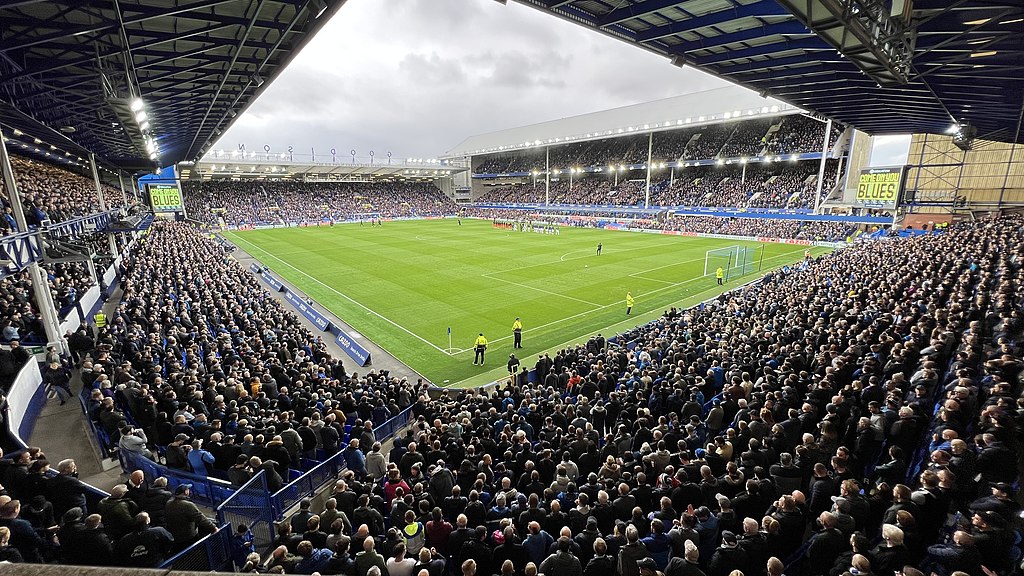Everton have just four months to wait until the club can finally rid itself of Farhad Moshiri’s mismanagement and the struggles of PSR.
Much has been made of the summer window with Kevin Thelwell and David Moyes speaking of breathing space once the current PSR period ends.
We take a look at why Everton will be transformed in the summer and what it means for the future of the club.
PSR is calculated over a three-year period and unfortunately for Everton, the loss of £2.2m in 2022 now drops off the calculation. Instead Everton’s next PSR deadline calculation will cover 2023-2025 and will include 2023’s loss of £62.7m and 2024’s loss, which has not been revealed but has to be less than £38m because the club did comply this year.
If 2024’s loss is the full £38m then Everton essentially need to break even in 2024 in order to comply with the next PSR deadline in June 2025.
READ MORE: Everton urgently need to fix Moshiri’s academy downgrade
This explains why Everton did not spend in January. In short, they lost a ‘good’ year of minimal losses and have very little wiggle room to comply with the £105m total when the current period ends in June.
That is the bad news.
The good news is that if Everton are on course to break even this year and comply with the PSR period the future is looking brighter.
From 2025 Everton drop 2023’s £62m loss from the calculation, meaning only the £38m loss from 2024 and the ‘break even’ year of 2025 would be part of the calculation, plus whatever the loss is going to be next season. It would give plenty of room for next season.
There are some caveats here. Everton have been propped up by selling players to the tune of £280m over the last three years. The club has made over £80m in profit in that time – significantly more than any other Premier League club. Sales of home grown players such as Anthony Gordon, Tom Cannon and Ellis Simms have been huge boosts to PSR, while the likes of Alex Iwobi and Ben Godfrey sales propped up the club during a difficult period.
In total Everton would be required to make a loss of no more than £67m next year to meet PSR rules – and the club has another ace up its sleeve that means player sales would not be needed.
The club has just 13 senior players contracted through to next season and that means saleable assets are at a minimum, which means the club will have to find new ways to make up the deficit, especially now that Beto and Chermiti payments are now kicking in and will be negatives on the balance sheet.
According to Kevin Thelwell, Everton have reduced the wage bill by 15% since the summer of 2022, with high earners such as Dele Alli, Andre Gomes and Yerry Mina all departing the club. The likes of Dominic Calvert-Lewin, Abdoulaye Doucoure, Idrissa Gueye, Michael Keane and Mason Holgate are all big earners whose contracts expire in the summer and while some may be retained on lesser contracts, the departures of others will further ease the wage bill.
But the real difference are in two key areas. The first is in the club’s debt. Farhad Moshiri’s disastrous management of club finances saw the club owe several high interest loans to the equivalent of pay day lenders. The club owed £200m to 777 Partners, with high interest loans also owed to MSP Capital and historic loans to Rights and Media Funding under Bill Kenwright’s leadership all set up to drain the club dry with horrendous interest rates.
Everton were reportedly paying 10.25% interest on loans to RMF and the costs had risen to a staggering £438,000 per week – or £25m a year in interest charges.
With the scale of the loans it is not outrageous to assume Everton were paying up to £1 million a week on servicing debt as the club spiralled into destruction before the new owners stepped in.
Everton still have loans but new owners The Friedkin Group have paid off MSP, RMF and 777 Partners. Instead it has taken out a credit facility with a reputable lender in JP Morgan and will have negotiated better rates over a longer term, significantly reducing the sheer scale of the losses being racked up under Moshiri.
This goes some way to explaining how Everton will have that key ‘break even’ year for 2025. However, it will also be helped by the commercial deals the club has been signing in the past 12 months.
The second key aspect is Bramley Moore Stadium. Everton move into the new 52,888 capacity stadium next season and it could transform the club’s finances. Estimates of naming rights predict the club could earn up to £150m in the shape of £15m spread across ten season and that money would go straight into the club’s PSR calculations.
The club recently sold 36,000 ‘Everton Way’ stones for the new stadium. Even if every person bought the smallest £65 stone (they didn’t, but let’s underestimate here), it earned the club nearly £3m in revenue. The club will also sell out over 30,000 season tickets, leading to increased revenue over Goodison Park.
Interestingly 10% of the seats at Bramley Moore are described as hospitality. Fans quickly sold out the ‘Everton Village’ area of the West Stand, which houses bars and restaurants and cost up to £7,500 a ticket. The costliest seats at Bramley Moore are located above the dugouts and feature private dining experiences and TV screens in the seat in front. These cost £50,000 for two. Even a handful of these seats could earn over £1m a season.
Corporate boxes, extra sponsorship opportunities and other match day experiences will push match day revenue, which is under £1m per match, to up to £40m a season as a minimum, according to football finance expert Kevin Maguire.
Then there are non-football activities. Richard Kenyon said: “The non-matchday opportunities with our new stadium are significant, too. It will be a world-class facility with the capability to be a true 365-day a year venue through tours, events, conferences, and concerts.
“The new stadium will also have a positive impact on the type of partners we will be able to attract and develop.”
Anfield earns the club nearly £2.5m per concert it hosts, according to estimates, which means hosting three or four concerts or other sporting events a year could bolster Everton’s income by up to £10m. The stadium will also host tours and the bars and restaurants will be open on non match days to further increase the club’s income.
By cutting loans rates by even half, Everton would save up to £25m a year. The new stadium could deliver £50m+ in commercial deals and match day revenue. Naming rights add more money, while new ‘founding partners’ such as Christopher Nolan, Aramark and Castore have also bolstered the club’s coffers.
Castore is a good example. Hummel was paying Everton £8m a year to manufacture the club’s kit and merchandise range, while PA reports Castore could be more than twice that figure, taking it to £20m a year for the club.
It is worth mentioning these figures are all ball park figures. But the overall picture is one of positivity. If Everton can get to 30 June unscathed and pass the current PSR deadline the purse strings can be loosened. Backed by lower debt repayments, a money-spinning stadium, a lower wage bill and huge new commercial deals the club has the capacity to finally compete with Premier League clubs.
Do not expect much in the way of transfer activity before that key date. Once we enter July Everton can and will spend. They will still need to spend wisely but when you add up all the financial aspects of the club it is easy to see why Everton fans should be excited to finally be able to compete again.
The word transformative is not an understatement. Not since the Oligarchs and oil states bought their way into the Premier League have clubs faced an opportunity to implement a financial overhaul like this.
Everton will not have billions to spend nor do the fans expect crazy transfer windows. They will expect the club to spend wisely and carefully, investing in future potential as much as solutions for the present. They will expect an academy overhaul and improvement in the club’s scouting and analytics operations. But the fact remains this is the biggest opportunity for a reset in the club’s history as the end of our PSR woes gets tantalisingly near.

